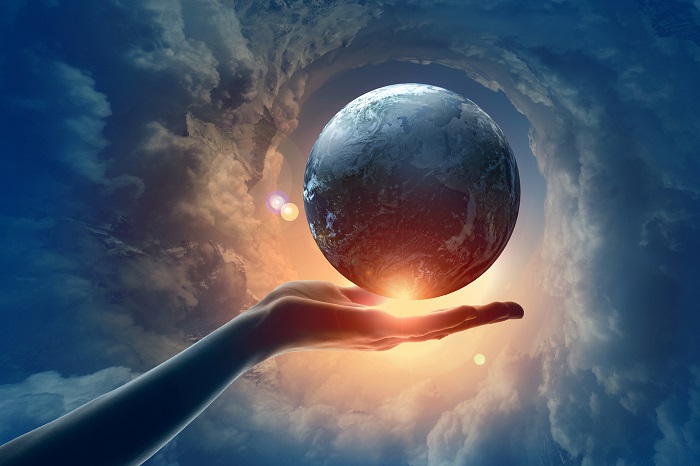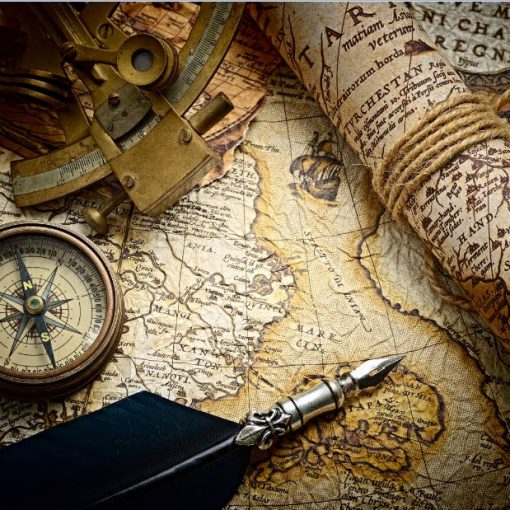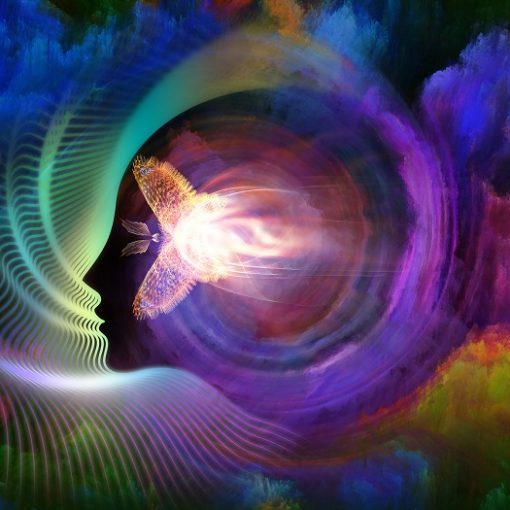
As the world population passes the 7 billion mark, Sir Crispin asks: Where are we coming from? Where are we now? Where are we going? There are no easy answers. For all of us the past as well as the future is an almost unknown country; and the present is a doubtful place with signs pointing in different directions.
First we need to establish the perspective. Humans are an infinitesimal part of the living world (0.00007% of estimated living species). Each of us has ten times more microbial than body cells. Our species is relatively new. No-one was around to record the evolution of the first human-like creatures from ape-like ancestors in Africa some four million years ago. They left the trees for the savannah, became relatively hairless, and learnt to walk upright on two legs, with consequences for the physiology of their growing brains. By at least half a million years ago they had split into a variety of related strains: among them were the Neanderthals and (as recently discovered) the Denisovans. Another offshoot may still have been living on the Indonesian island of Flores as recently as 16,000 years ago (a mere blink in geological time).
So far through analysis of fossils and work on current humans, we have been able to trace the genealogy of Homo sapiens back some 200,000 years. All other branches of humans are now extinct, but many of us share at least a small proportion of their genes.
The Human Impact on the Earth
Over the last 40,000 years the human impact on the Earth has slowly and then rapidly increased. Hunter gatherers fitted easily, although sometimes uncomfortably, into the ecosystems of the cold and warm periods of the Pleistocene. People migrated in response to changing conditions but farming with land clearance between 10,000 and 8,000 years ago changed everything. With a vast increase in human population came towns and eventually cities. Tribal communities evolved into complex hierarchical societies. For a rich variety of reasons such societies rose and fell, and usually, but not always, recovered. The pulse of civilisation has always been irregular.
Before the industrial revolution some 250 years ago, the effects of human activity were local, or at most regional, rather than global. Now the impact is indeed global, indeed many geologists would like to establish a new geological epoch – the Anthropocene – to mark the extraordinary effect that human activity has had on the surface of the Earth, and will have in the future. There are boundaries, recently defined by Johan Rockstrom, which we cross at our peril. In fact three have already been crossed. There are six more to go.
The idea may be hard to accept, but in its long history with all its variations the Earth has never been in this situation before. In my view there are six main factors which have driven this transformation, and will continue to do so in the future. Of these population issues are often ignored as somehow embarrassing or mixed up with religion; most people are broadly aware of land resource and waste problems, although far from accepting the necessary remedies; water issues, both fresh and salt, have had a lot of publicity, and already affect most people on Earth; climate change with all its implications for atmospheric chemistry and sea level rise is also broadly understood, apart from those who do not want to understand it; how we generate energy while fossil fuel resources diminish and demand increases is another conundrum; but damage to the diversity of life on which our species critically depends has until recently escaped the attention it should have received.
Here we remain ignorant of our own ignorance. Yet in this area human destructiveness has been most evident over the last 10,000 years. Current rates of extinction could in the long run be the most important of all these factors for human welfare and the future of our species. All are interlinked, and all represent pressure on the natural environment.
There is now a seventh factor recent in human experience. It arises from the introduction of new technologies. In a recent book Martin Rees, former President of the Royal Society, explored the dangers arising from human inventiveness, folly, wickedness and sheer inadvertence. The ramifications of information technology, nano-technology, nuclear experimentation and the rest have still to be understood and explored. His conclusion was to give our civilisation only a 50% chance of survival beyond the end of this century.
What then are we to expect? How are we to recognise that the last 250 years or so have been a bonanza of inventiveness, exploitation and consumption which may not continue? All successful species, whether bivalves, beetles or humans, multiply until they come up against the environmental stops, reach some accommodation with the rest of the environment, and willy-nilly restore some balance. Are we near to those stops? To judge from what we heard yesterday, we are pretty close to them.
We can all have our own lists and calculations of the dangers. I have already suggested some of mine. Going back to them, I have no doubt that we have to rethink how we run our society. That means confronting the major issue of our own multiplication in all its aspects (ten thousand more humans every hour and almost eighty million every year); looking again at a lot of economics and how we measure things; giving high priority to conservation of the natural world; working out new ways of generating energy; dispersing and to some extent localising the ways by which we feed ourselves; managing and adapting to climate change, or as I prefer to call it climate destabilisation; and creating the necessary institutional means of coping with global problems.
We all suffer from a disease of what has been called conceptual sclerosis. Little is more difficult than learning to think differently, above all when problems go to the roots of the conventional wisdom. Nurture is often at war with nature. Old ideas haunt us like ghosts.
The Future Outlook
So what kind of future can our species expect in a world which is changing under human pressure before our eyes! Bear in mind that nearly all forecasting turns out to the wrong. We do well to expect the unexpected.
There are the obvious challenges. Some relate to the Earth as a whole: for example the natural disruptions known throughout history, volcanic explosions, earthquakes, impacts of extraterrestrial objects, and variations in ecosystems, including patterns of disease. Climate change may well have redistributed human as well as other organisms. Then there are the specific problems of humanity, including the widening divisions between rich and poor within and between countries, shortages of food and water, the perils of migration, the high vulnerability of cities, the growth of terrorism, the risks of war with unimaginably horrible weapons, and the exhaustion of often irreplaceable resources. This conference is about population, and I will not repeat what must have already been said.
But this is not the whole story. Nor does it cover changes in the balance of power between East and West, and North and South. That is a huge subject in itself: political, social, economic and technological. Indeed such changes may come to represent the most important for hundreds of years, and they seem to be accelerating.
The implications for governance reach equally wide. In some areas good regulation will be more important than ever. In the words of the title of a recent book, we have to recognise that most things fail, whether they be natural organisms or human institutions. Already there is a movement of power away from the nation state: upwards to global institutions and corporations to deal with global issues; downwards to communities of more human dimensions; and sideways by electronic means betweens citizens everywhere. Upwards I believe we need a World Environment Organisation to balance and be the partner of the World Trade Organisation, which would coordinate the work of the numerous specific environmental treaties and agreements; downwards we need to bring in a much stronger sense of the environment at local and regional level (hence ideas for a Big Society); and sideways we need to engage individuals and endower them with stronger feelings of personal responsibility for the environment.
100 Years On
It would be rash to attempt to forecast how the world will look even a hundred years from now. But it may be useful to jump that hundred years, and from this vantage look backwards. In doing so, I shall assume, I hope correctly, that humans will have faced up to and coped with at least some of the problems I have discussed. As in the past, there will be some failures and collapses. Not all change will be good. So what is my guess for what the world will look like?
First humans are likely to be living in a more globalised world of rapid communication. Here is an obvious consequence of current technology. Ideas and units of information – or memes – will pass almost instantaneously between countries, communities and individuals. The wiring of the planet with fibre optics, cellular wireless, satellites and digital television is already transforming human relationships. More than ever in the past there will be something like a single human civilisation. Like certain species of ants, humans can be regarded as a superorganism.
Human numbers in cities and elsewhere are at present rising fast, but it is hard to believe that this can or will continue in the second half of this century. By 2110 our numbers will almost certainly be reduced. Some people will live much longer, bringing its own train of problems. Their distribution will be different. Women will have a more important role. It has been suggested that an optimum population for the Earth in terms of its resources would be nearer to 2.5 billion rather than – as now – almost 7 billion or even 9 billion by mid-century.
Communities are likely to be more dispersed without the daily tides of people flowing in and out of cities for work. Current obsessions with so called growth and ever-increasing consumption will be replaced by the need to make better use of resources, respect the natural capital of the Earth, and measure health, wealth and happiness in a more rational way. Agriculture will be more local and specialised with greater reliance on hydroponics. Energy and transport systems will be decentralised. Archaeologists of the future may even wonder what all those roads were for.
On the one hand some humans may thereby be liberated from many current drudgeries. Houses may be able to clean themselves, robots may produce meals on demand, cars may drive under remote instruction, and evolution of desirable characteristics could even be automated. All this seems hardly imaginable when so many still have to trudge miles to collect fuel, wood and water.
On the other hand humans could well become dangerously vulnerable to technological breakdown, and thereby lose an essential measure of self-sufficiency.
All this raises deeper questions about evolution, itself the product of natural selection, genetic drift, symbiosis, and – not least – chance. Changes are already taking place, for example in resistance, or lack of it, to certain diseases. We heard on Friday night about the physical effects of shortage of Omega 3 fatty acid. We are capable of manipulating or altering some genes, and can even insert extra chromosomes for a limited variety of purposes. Last year we even created a self-replicatory life form inside an empty bacterial cell. Who knows what we will do next? Will the rich eventually choose the best genes for their children? And humans divide between those up above and those down below as once predicted by H G Wells?
Already it has been shown that the current electronic revolution and the daily deluge of information it has produced can have big effects on the brain, the most remarkable part of the human body. Revolutions of the past, for example the invention of writing, slowly changed the way in which we stored information and made use of it. Some parts of our memory sticks emptied and others filled up.
Now the problem in changing. Instead of putting information together and taking a relatively unified view, we are reacting to a multiplicity of bits of fast moving information and dealing with the bits as best we can as they come. In short we are no longer so good at seeing the wood for the trees, or even seeing the trees for the twigs. The physical functioning of our brains may already be changing; and the notorious tilt between the left and the right hemispheres with it.
Another long term aspect of evolution may also be important. There has been a tendency to think that the more we use our brains and the larger they become, the more intelligent we will be. It may be true that as we learn to store information in new and interesting ways outside our bodies, we will be able to use it in ways impossible for our predecessors. But the brain itself represents an extraordinary balance between sheer size, its physical properties (neurons and axons), and energy to drive the whole apparatus.
As is well described in a recent article on The Limits of Intelligence by Douglas Fox in the July edition of the Scientific American, we may be up against the physical limits of our brains. Bigger may not be better nor even more beautiful. Fox points out that a honey bee, with its milligram-size brain, can perform tasks such as navigating landscapes on a par with mammals; while elephants with their five hundred million fold larger brains, need more than a hundred times longer for their signals to travel between the opposite sides of their brains, and from their brains to their feet. So mere increase in size, even if it were feasible, would not necessarily increase human intelligence. If anything our brains have shrunk in size in the last few thousand years. It would be better to follow the example of the bees. Smaller can be more beautiful after all.
These problems may look far away. Let us hope without total confidence that by 2100 humans will have worked out and will practice an ethical system in which the natural world has value not only for human welfare but also for and in itself. The human superorganism must take its place alongside other superorganisms.
The Far Future
For the really long term I hesitate to speculate. Tectonic plate movement will shift the relationship between land and sea. Changes in oxygen levels in the atmosphere may affect the viability of life itself. The human species may even change its shape, let alone its brains, assuming some are still there to tell the tale. For example given the evolutionary significance of our brains and the current hazards of childbirth, we might imagine a sort of human marsupial in which women gave birth earlier in the reproductive process, and developed a kind of pouch.
I sometimes wonder how long it would take for the Earth to recover from the human impact. Future visitors from outer space might well be puzzled by the fossil remains of ourselves and the agglomerations we call cities, in short the relics of the Anthropocene. They might also wonder at the fossils of the other animals and plants we have so abruptly adapted for our own purposes. In the future rats could be as big as dogs, water hyacinths could block lakes, and microorganisms could go macro. But they should know, as should we, that life itself, from the bottom of the seas to the top of the atmosphere, is so robust that the dominance of any one species could be no more than a relatively short episode in the history of life on Earth. Above all we must recognise how small and vulnerable we are as creatures of a particular environment at a particular moment in time. Let us enjoy it while we can.
Sir Crispin Tickell….. Most of his career was in the British Diplomatic Service. He was Chef de Cabinet to the President of the European Commission (1977-80), British Ambassador to Mexico (1981-83), Permanent Secretary of the Overseas Development Administration (1984-87), British Permanent Representative to the United Nations in New York (1987-90), Warden of Green College, Oxford (1990-97), China Council for International Co-operation on Environment and Development (1992-2006) Director of the Policy Foresight Programme in the Oxford Martin School, Oxford University (2009-2010)




